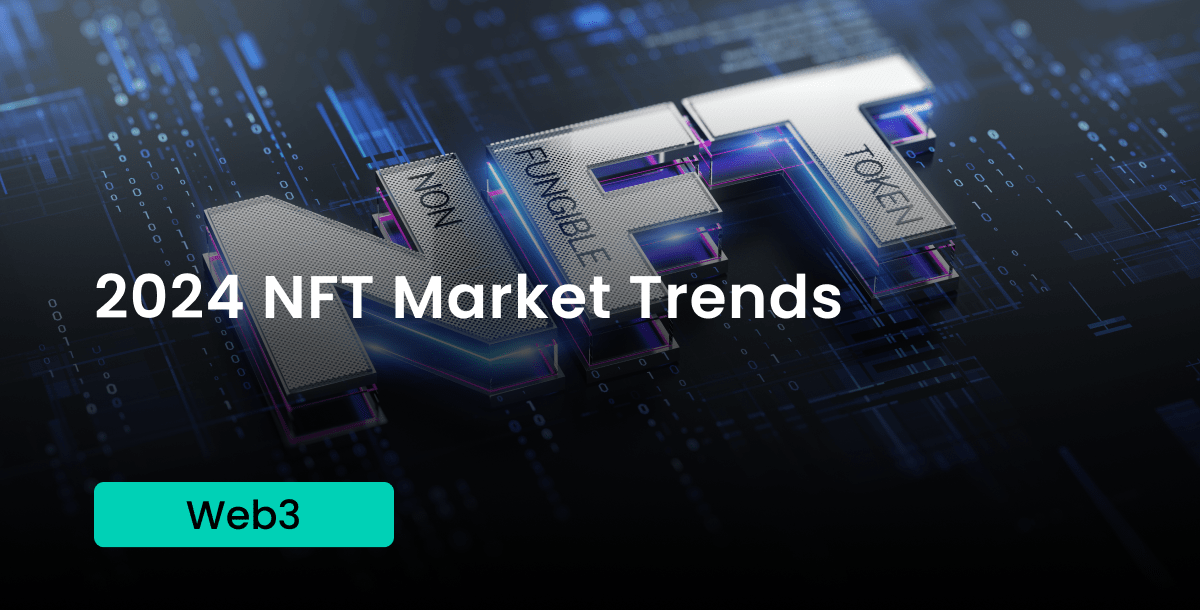In 2024, the NFT (Non-Fungible Token) market is anticipated to continue its expansion, driven by a broad spectrum of applications that demonstrate the technology's growing appeal. In 2023, well-known brands such as Nike, Reddit, and Starbucks ventured into the NFT space, launching their own NFT products and attracting considerable attention from new users. The introduction of Bitcoin Ordinals and similar innovations has allowed users to link their NFTs to specific Bitcoin addresses or hash values, adding a new layer of value to NFTs. Beyond serving as mere digital avatars, NFTs are increasingly utilized for tickets, memberships, fan interactions, and more, showcasing their potential beyond speculative investment
According to a market insight report by Statista, NFT market revenue is expected to reach $2.378 billion in 2024, with a projected Compound Annual Growth Rate (CAGR) of 11.34% from 2024 to 2027, culminating in a total revenue of $3.282 billion by 2027. The average revenue per user in the NFT market for 2024 is estimated at $138.80. On a global scale, the United States is forecasted to generate the highest revenue, with an expected figure of $11.22 billion in 2024. The number of NFT market users is anticipated to reach 19.62 million by 2027. Bitcoin’s all-time sales volume now stands at US$2.96 billion. The blockchain is on pace to top US$3 billion this week, a milestone reached by just three other networks.
The NFT industry is poised for further growth and integration into various use cases in 2024. A notable trend is the deepening connection between digital and physical assets. Collectors with a keen interest in tangible versions of NFT art are expected to drive significant growth, bridging the gap between the two worlds. This development not only enhances the tangible value of NFTs but also positions them as unique and authentic representations within the physical realm.
The trend of tokenizing Real World Assets (RWA) remains a hot topic in the cryptocurrency space, with discussions expected to extend into 2024. NFTs are predicted to move beyond speculative attributes, capturing real-world value through RWA tokenization. This strategy has been applied to NFT collections, offering brand merchandise, intellectual property ownership, exclusive rights, and product consultations. In 2024, the influence of NFTs may expand to precious metals, real estate, and other high-value assets, facilitating the tokenization of real-world assets.
The integration of NFTs with RWAs highlights the potential for transforming physical assets into highly liquid blockchain tokens, enabling instant cross-border investments. The transition from purely digital assets to a mix of digital and real-world assets is expected to broaden the appeal of NFTs, bridging the gap between traditional finance and the emerging blockchain domain.
Gaming Industry
The gaming industry is one of the primary sectors propelling the rapid growth of NFTs. NFTs can be applied to virtual items, properties, and characters within games, allowing players to purchase, trade, and collect unique game NFTs, showcasing their collections within the gaming environment. For game developers, NFTs offer new revenue streams, enhancing the sustainability and long-term value of games.
Despite some gamers' reservations about Web3 games and NFTs, gaming companies are increasingly incorporating them into their products. Notable examples include Square Enix's Symbiogenesis and Mythical Games' NFL Rivals, which have adopted NFT technology, laying the groundwork for more immersive and engaging gaming experiences. This shift represents the early stages of NFT gaming, where tokens are primarily showcased as novelties rather than focusing on gameplay appeal.
Industry experts, such as John Crain, predict that 2024 will be a turning point for NFT gaming. Web3 gaming studios are currently focused on developing high-quality games, leveraging NFTs and tokens to enhance the overall gaming experience.
Real Estate Industry And Art Industy
Furthermore, the application of NFTs in the real estate sector is expected to expand further. Real estate NFTs can represent houses, land, and property rights. Combining real estate with NFTs can offer greater transparency, tradability, and liquidity, reducing transaction costs and minimizing the use of paper documents. Real estate developers and investors can issue NFTs to fractionalize and sell property rights, while buyers can invest and trade more easily. Additionally, in 2024, the growth of NFTs in the art market is expected to continue. Artists can sell digital artworks through NFTs, ensuring the uniqueness and copyright ownership of their work. NFTs also provide more ways for art exchanges and interactions, such as virtual exhibitions and digital art auctions.
Despite the optimistic outlook for NFTs' resurgence, challenges remain in 2024. Many professionals believe that public awareness and understanding of NFTs are still limited, requiring more education and promotional efforts. By creating attractive products and offering real value, the public's perception of NFTs can be positively changed.
Regulatory uncertainty is another challenge for NFTs in 2024. The U.S. Securities and Exchange Commission (SEC) intervened in the NFT space in 2023, raising unregistered securities claims against certain NFT projects, highlighting the need for clearer legal frameworks. A clear regulatory framework is considered crucial for protecting consumers and investors and ensuring the stability necessary for the maturity and development of the NFT field. However, it is uncertain whether specific regulatory measures related to NFTs will be implemented in 2024. Establishing a fair competitive environment and creating conditions for the individuality of different Web3 technologies is a complex task that requires careful handling.
Overall, despite the challenges faced by the NFT application market in 2024, the industry remains optimistic. This positive outlook is driven by functional and value-driven projects, creative collaborations, and the demand for real-world applications. The integration of NFTs in both digital and physical domains plays a significant role, representing human values. NFTs serve as a blank canvas, adaptable and capable of capturing infinite possibilities, with the potential to shape the evolving landscape of digital ownership and creativity.
In this evolving landscape, platforms like ChainUp's NFT marketplace emerge as pivotal players, offering robust solutions that cater to the growing needs of the NFT ecosystem. ChainUp's platform distinguishes itself through a comprehensive suite of services designed to simplify the creation, sale, and purchase of NFTs for creators, collectors, and investors alike. Key advantages include a user-friendly interface, high security standards to protect users' assets, and a broad range of tools for artists and creators to launch their digital works. Moreover, ChainUp ensures liquidity and accessibility by integrating with various blockchain networks, making it easier for users to interact with NFTs across different ecosystems.
ChainUp's NFT platform also emphasizes community and social features, allowing users to engage with each other, discover new artists, and participate in exclusive events. This approach not only fosters a vibrant ecosystem around digital art and collectibles but also opens up new avenues for fan engagement and brand collaborations.
For those interested in exploring the possibilities offered by ChainUp's NFT platform and staying ahead in the dynamic NFT market, visiting their website provides a gateway to a wealth of resources and opportunities. ChainUp is committed to advancing the NFT domain, offering a seamless and enriched experience for all participants in the NFT space.
Visit ChainUp's NFT page to learn more about their offerings and how they are shaping the future of digital collectibles and creative content.




